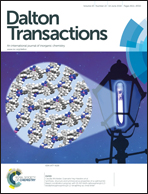Forming a ruthenium isomerisation catalyst from Grubbs II: a DFT study†
Abstract
A DFT investigation into the mechanism for the decomposition of Grubbs 2nd generation pre-catalyst (2) in the presence of methanol, is presented. Gibbs free energy profiles for decomposition of the pre-catalyst (2) via two possible mechanisms were computed. We predict that decomposition following tricyclohexylphosphane dissociation is most favoured compared to direct decomposition of the pre-catalyst (2). However, depending on the reaction conditions, an on-pathway mechanism may be competitive with ruthenium hydride formation.


 Please wait while we load your content...
Please wait while we load your content...